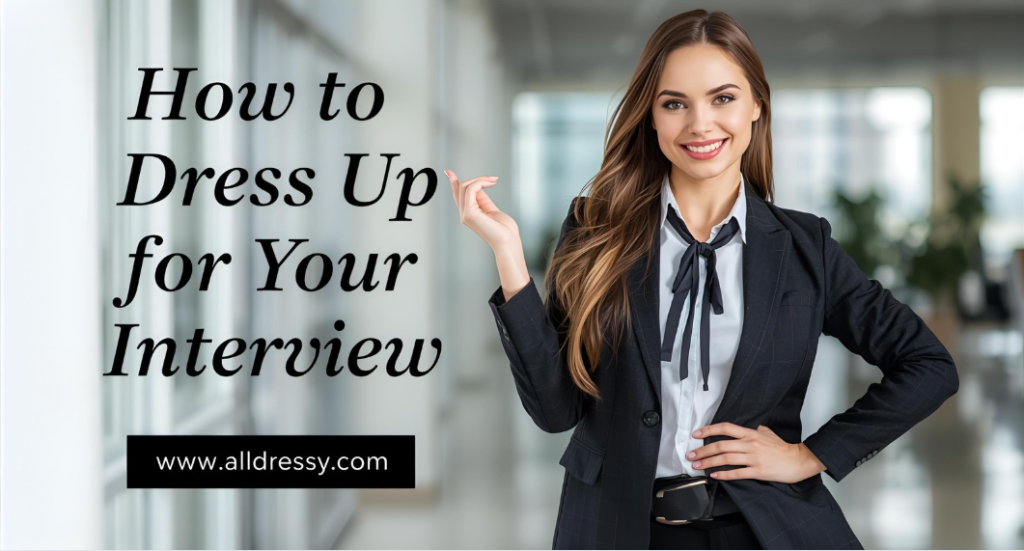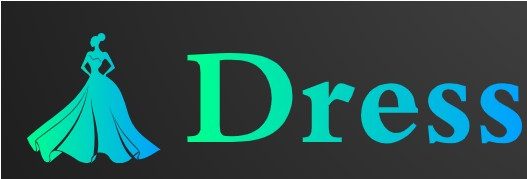Dressing appropriately for an interview is one of the most important steps in making a positive first impression. Knowing how to dress up for an interview not only boosts your confidence but also communicates professionalism, attention to detail, and respect for the opportunity. Whether you’re interviewing for a corporate role, creative position, or casual startup environment, dressing correctly can significantly influence how interviewers perceive you.
In this guide, we will cover everything from outfit selection and grooming tips to color coordination, accessories, footwear, and industry-specific advice. By the end, you’ll have a comprehensive understanding of how to dress for success.
🌟 Why Dressing Well for an Interview Matters

The way you dress for an interview is more than just fashion; it’s a statement about your professionalism and personality:
- First impressions last: Studies show that interviewers form opinions within the first 30 seconds.
- Boosts confidence: Dressing appropriately makes you feel poised and ready.
- Reflects professionalism: The right attire shows you understand the company culture and expectations.
- Sets the tone: Proper dressing can complement your skills and body language, making your overall presentation stronger.
Remember, your outfit is part of your personal brand—it’s often the first step in telling your professional story.
👗 Key Principles for Dressing Up for an Interview

When preparing your interview outfit, follow these core principles:
- Understand the company culture: Research whether the workplace is corporate, business casual, or casual.
- Prioritize fit and comfort: Ensure your clothes are well-tailored and comfortable to avoid distraction.
- Opt for classic, neutral colors: Colors like black, navy, gray, beige, and white convey professionalism.
- Avoid excessive patterns or logos: Stick to solid colors or subtle prints.
- Balance modesty and style: Avoid overly revealing clothing or excessively trendy pieces.
- Focus on grooming and accessories: Well-kept hair, polished shoes, and minimal jewelry complete the professional look.
👔 Outfit Options by Industry
Different industries have varying expectations for interview attire. Here’s how to dress appropriately across sectors:
1. Corporate & Finance
- Men: Dark-colored suit, crisp dress shirt, conservative tie, leather shoes.
- Women: Tailored blazer and trousers/skirt, button-down blouse, closed-toe heels.
2. Creative Industries (Marketing, Design, Media)
- Men: Dress pants with smart shirt or blazer; tie optional depending on company culture.
- Women: Dress, blouse with skirt, or tailored pants; use colors or subtle patterns to show personality.
3. Tech & Startups
- Men: Business casual – chinos or dress pants, collared shirt, optional blazer.
- Women: Business casual dress, blouse with pants or skirt, flats or low heels.
4. Retail, Hospitality, & Customer Service
- Men & Women: Neat, clean, and simple attire; avoid casual wear like jeans or sneakers.
- Women: Blouse with trousers or dress; minimal accessories.
- Men: Polo shirt or button-down with slacks.
🧵 Choosing the Right Clothes
Selecting the correct pieces is critical for dressing up for an interview:
1. Suits and Blazers
- Well-tailored suits convey professionalism and polish.
- Stick to classic colors like navy, black, or gray.
- Blazers can elevate business casual outfits.
2. Shirts and Blouses
- Crisp, ironed shirts or blouses give a neat appearance.
- Avoid loud patterns or flashy logos.
- Subtle colors or light pastels are safe options.
3. Pants, Skirts, and Dresses
- Trousers should be well-fitted and wrinkle-free.
- Skirts or dresses should be knee-length or longer.
- Avoid overly tight or short styles that may appear unprofessional.
4. Footwear
- Men: Polished dress shoes in black or brown.
- Women: Closed-toe heels or flats; avoid overly high or flashy shoes.
- Ensure shoes are clean and in good condition.
5. Accessories
- Minimal and elegant jewelry is preferred.
- A classic watch or subtle bracelet adds sophistication.
- Avoid excessive accessories that may distract.
🎨 Color Choices and Patterns
Colors and patterns subtly influence how you are perceived:
- Neutral Colors: Black, navy, gray, beige – communicate professionalism.
- Accent Colors: Light blue, soft pink, or muted tones – add personality without overwhelming.
- Patterns: Pinstripes or subtle checks are acceptable; avoid bold patterns.
- Avoid: Neon colors, excessive prints, or flashy designs that distract from your professionalism.
💇 Grooming and Personal Care
Personal grooming is just as important as clothing:
- Hair should be neat and styled appropriately.
- Nails clean and trimmed; neutral polish for women.
- Minimal, professional makeup.
- Fresh breath and subtle fragrance.
Proper grooming enhances the overall impression and shows attention to detail.
👠 Accessories to Complement Your Interview Look
Accessories should enhance, not distract:
- Bags: Simple, structured handbag or professional briefcase.
- Belts: Match your belt with shoes for a coordinated look.
- Jewelry: Minimalist earrings, watch, or necklace.
- Scarves or ties: Optional but can add sophistication.
📝 Final Touches: Preparing Your Outfit
- Iron or steam clothes to remove wrinkles.
- Ensure shoes are polished.
- Keep the outfit simple and professional.
- Try on the full outfit the day before to ensure fit and comfort.
💡 Tips to Dress Up Your Outfit Without Overdoing It
- Add a blazer: Instantly elevates any business casual attire.
- Use a belt: Defines the waist and adds structure.
- Choose polished shoes: Never underestimate the power of clean, professional footwear.
- Layer smartly: A cardigan or vest can add elegance to simpler outfits.
- Subtle accessories: Small earrings or a watch add professionalism without distraction.
👗 Common Mistakes to Avoid
- Dressing too casually or wearing ripped/old clothing.
- Wearing overly bright or flashy colors.
- Over-accessorizing with heavy jewelry.
- Ignoring personal grooming.
- Wearing uncomfortable shoes that may affect confidence.
- Overcomplicating your outfit with too many layers.
💬 FAQs About How to Dress Up for an Interview
1. Should I wear a suit to every interview?
Not always. Suits are ideal for corporate and formal positions. Research the company culture to decide if business casual is more appropriate.
2. Can I wear colors to an interview?
Yes, but stick to subtle, muted tones. Bright colors may distract or seem unprofessional.
3. What shoes are best for interviews?
Polished, closed-toe shoes for both men and women. Avoid sneakers, flip-flops, or overly flashy styles.
4. Is it okay to wear jewelry?
Yes, keep it minimal. A watch, small earrings, or a simple bracelet works best.
5. How do I dress for a tech startup interview?
Business casual is acceptable – chinos or dress pants, collared shirt, or a neat blouse. Avoid overly formal suits unless specified.
6. What about makeup or cologne?
Keep makeup subtle and professional. Light fragrance is acceptable, but avoid overpowering scents.
7. Can I wear a skirt or dress?
Yes, knee-length or longer, paired with a blazer or cardigan for a polished look.
8. How do I prepare my outfit ahead of time?
Iron clothes, polish shoes, check for stains or loose threads, and try on the outfit the day before.
9. Should I accessorize with a tie?
Men can wear a tie for formal roles. For business casual settings, it may be optional. Women can accessorize with a scarf or necklace instead.
10. How do I balance style and professionalism?
Stick to neutral colors, minimal accessories, well-fitted clothing, and polished shoes. Small touches like a blazer or watch can elevate your look without overdoing it.
💖 Conclusion: Dress for Success
Learning how to dress up for an interview is about more than clothing – it’s a strategy to present yourself confidently and professionally. A polished appearance demonstrates that you understand the company culture, respect the opportunity, and are ready to succeed.
Key takeaways:
- Research company culture before choosing attire.
- Prioritize fit, comfort, and professionalism.
- Stick to classic colors and subtle patterns.
- Use accessories and layering to elevate your outfit.
- Focus on grooming and personal care.
By following these tips, you can dress for success and make a lasting impression, giving yourself the best chance to excel in your interview. Remember: when you look professional and feel confident, your skills and personality shine even brighter.

